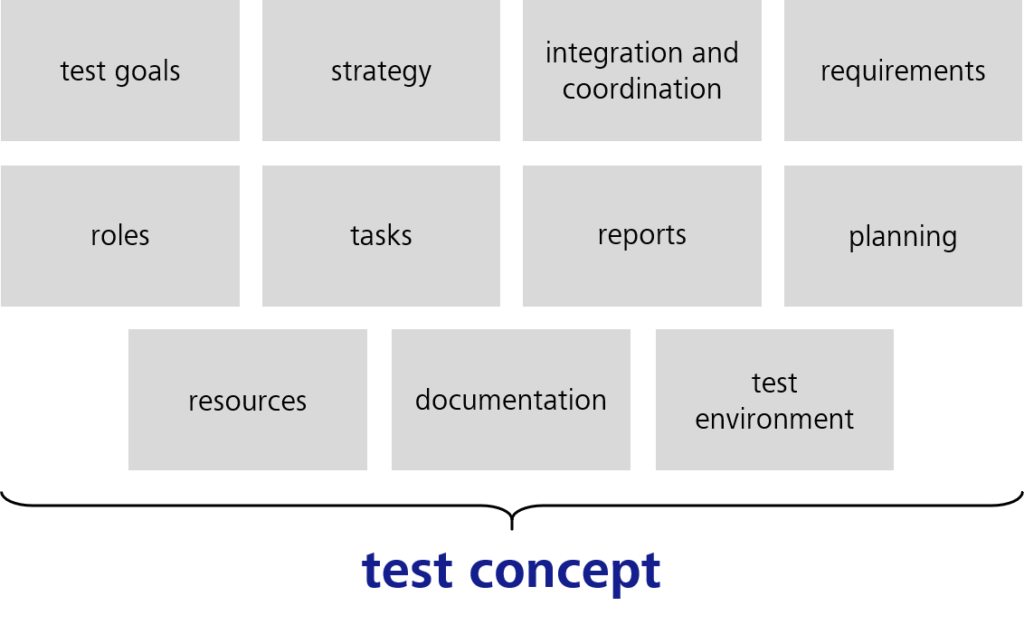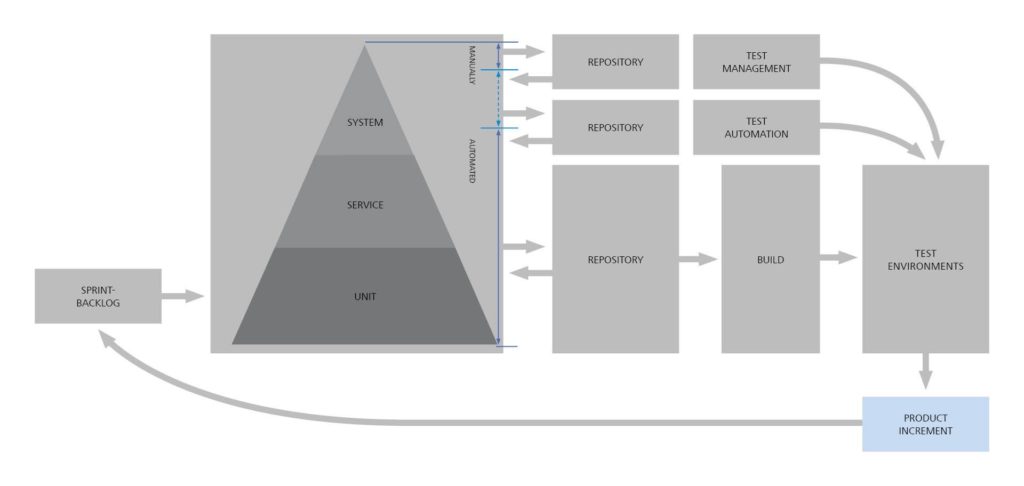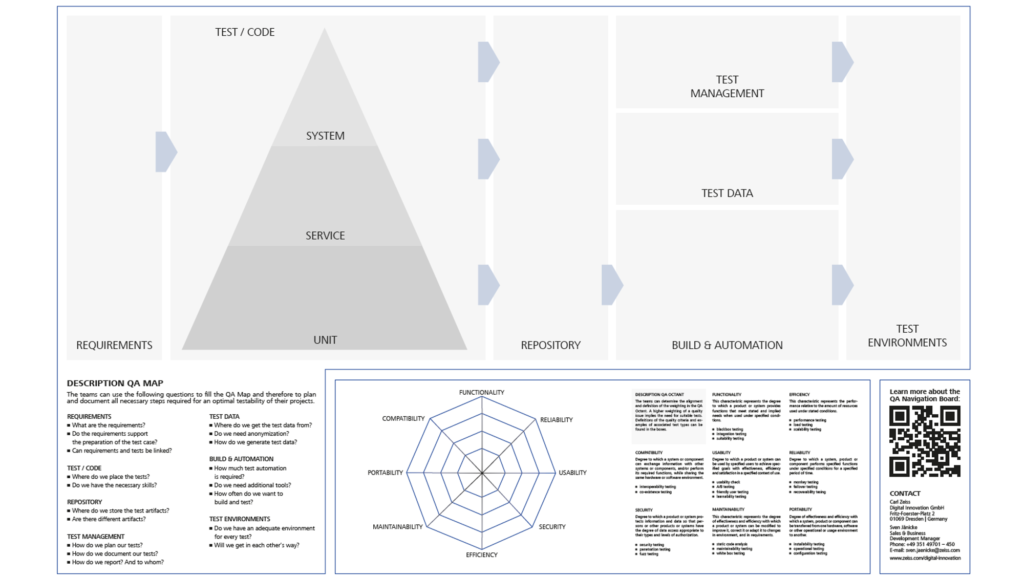In development projects, most clients primarily focus on thoughts of functionality and added value. Consequently, QA and testability are neglected in the planning stage. The team then encounters obstacles in the testing stage that can be avoided if the QA tasks are planned with some forethought. For the planning of the advanced testing stages, testers already have an adequate procedure: a detailed test concept that documents the test objectives and defines corresponding measures and a schedule.

However, this level of detail is not suitable for agile projects and development teams. Nevertheless, the team should consider most of the aspects that are specified in the test concept before starting a project. This is why we have developed a tool that enables the teams to take all the measures required for optimal testability in software projects into account. This tool covers the questions “What needs to be tested?” and “How and where do we want to test?”
To answer the first question, “What needs to be tested?”, in regard to software products, specifying the quality characteristics for the requirements to be fulfilled is decisive. The different quality characteristics are provided in ISO 25010 “Systems and software Quality Requirements and Evaluation (SQuaRE)” (Fig. 2).

Depending on how much the implemented requirements affect the quality characteristics, it is necessary to check these characteristics by means of a corresponding type of test. Apps with a high data throughput for example require efficiency tests, whereas web shops should be tested for compatibility in various browsers.
To facilitate the introduction of this topic to the teams, we use the QA Octant. The QA Octant contains the quality characteristics for software systems according to ISO 25010. These characteristics also point to the necessary types of tests that result from the set weighting of the different functional and non-functional characteristics (Fig. 3).

Thanks to the simple visualization and weighting of the different quality characteristics, the QA Octant can be used for planning. It allows product owners to keep track of the relevant requirements, and the team can classify the requirements according to the quality characteristics together with the product owner. Due to the weighting in the team, different opinions are more discernible, and the agreed classification can be clearly documented. The result then allows for the necessary types of tests to be deduced.
To answer the second question, “How and where do we want to test?”, the team would have to comb through the entire development process to find and document test and QA aspects. The development process can be different for every project, which could quickly make this issue highly complex (Fig. 4).

Again, to facilitate the introduction of this topic to the teams, we have developed the QA Map. The QA Map gives the team a practical tool to plan and document the measures required for optimal testability of the projects. The objective is to determine all QA-relevant issues for the teams and development projects, using a playful approach and at an early stage. All aspects of the test strategy, such as types of tests and tools, can be visualized, discussed and prioritized together in planning rounds. In addition to the planning, the QA Map with its eye-catching representation also serves as a reminder, or a quick introduction to the team’s test strategy.
Put together, the octant and the map form the QA Navigation Board, which can be put up as a picture on the wall (Fig. 5).
The QA Navigation Board provides a visual aid to the development teams, by means of which they can assess the planning aspects of quality assurance at an early stage. During the project term, the QA Navigation Board can also be used as a reference for the current procedure and as a basis for potential improvements.
Good luck testing!
